#tank destroyers
Text

Pakistani M36B2 90mm GMCs destroyed during fighting with India in Pakistani Punjab during the 1965 Indo-Pakistani War.
16 notes
·
View notes
Text
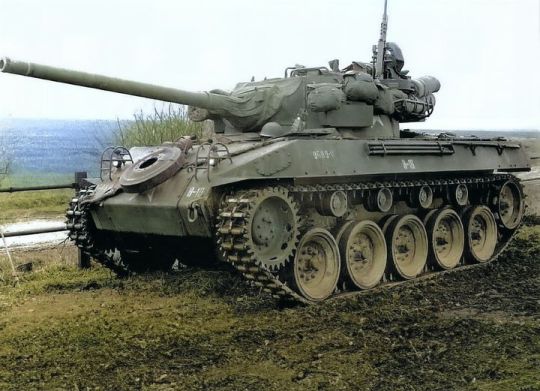
M18 Hellcat of the 827th Tank Destroyer Battalion, 1944.
185 notes
·
View notes
Text
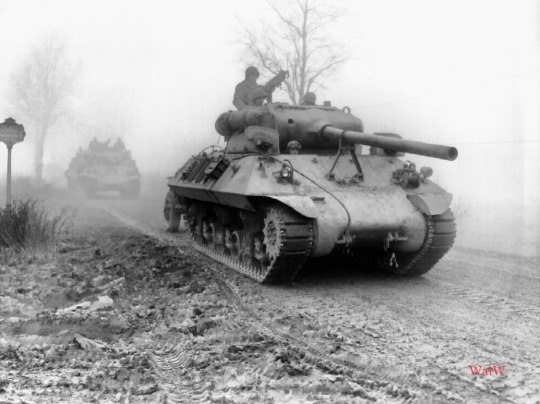
A US Army M36 Jackson tank from the 703rd Tank Destroyer Battalion, 82nd Airborne near Werbomont, Belgium. 20th December, 1944
#world war two#1940s#worldwar2photos#history#ww2#ww2 history#wwii#world war 2#wwii era#ww2history#usairborne#us airborne#m63#tank#Jackson tank destroyer#1944#Belgium#werbomont
160 notes
·
View notes
Text



the trilogy
#south park#kyman#eric cartman#kyle broflovski#talk tag#i love that kyle and cartman compliment each other’s move sets so well#like cartman does a stupid leap across the map making him vulnerable and kyle’s healing ability reels him in#sucks that their characters SUCK like they’re some of the worst in the game#who would wanna play as cartman or kyle in tfbw (me. i would. i love their banter)#i also love that kyle and cartman perfectly compliment each other in phone destroyers as well#cartman’s the tank with a mid tantrum attack#and kyle’s a booster with weak health. but when he boosts allies’ attacks aka cartman’s they both rly shine#bc then cartman’s tantrum is SUPER powerful when used w/ kyle#and cartman keeps kyle from gettin k’oed in like two hits#ugh they’re so perfect for each other
136 notes
·
View notes
Text

Nashorn 121, 131 et 231 du 525e Bataillon de chasseurs de chars lourds (Schwere Panzerjäger-Abteilung 525) – Bataille d'Anzio (Opération Shingle) – Campagne d'Italie – Anzio – Italie – 1944
#WWII#campagne d'italie#italian campaign#bataille d'Anzio#battle of Anzio#opération shingle#operation shingle#armée allemande#german army#heer#525e Bataillon de chasseurs de chars lourds#Schwere Panzerjäger-Abteilung 525#char#tanks#chasseur de chars lourd#heavy tank destroyer#nashorn#anzio#italie#italy#1944
73 notes
·
View notes
Text
The Only Successful Chernobyl Robot: The Toy Tank

Chernobyl is a notable example of the use of robots to clean up and scout out areas hazardous to human workers. The robots of Chernobyl are infamous amongst the Liquidators who worked with them for their unreliability and expense. Because of their cost and the way Soviet procurement worked, any robot that failed while being used had to be retrieved by the Liquidators. Since most of the robots died in high radiation areas, many men were 'burned' (met their radiation quotas) just to get them into relative safety where they could be repaired or scrapped. There is, however, one notable exception to this trend; the Toy Tank (seen in the photo above).
Purchased by a liquidator in Kiev for 12 rubles (~$5) in 1986 after the Chernobyl disaster, this plastic tank had a short cord attaching it to its remote controller. It could move forwards and backwards, turn, and rattle to imitate firing its gun. After being brought to the Chernobyl Zone, it was quickly retrofitted for use at the CHNPP. The controller wire was extended to ten meters, and the tank was retrofitted with a flashlight, thermometer, and dosimeter. Using these tools, the tank could be sent ahead of exploration teams in the warren of rooms and hallways of Unit 4 as a 'hunting dog' to do primitive dosimetric and temperature exploration. This allowed the Liquidators to move with far more safety and caution into the depths of Unit 4.
The tank was procured and used by the Chernobyl Sarcophagus Exploration Team, a group of scientists from the Kurchatov Institute tasked with locating and monitoring the uranium fuel of Reactor 4 within the Unit Block. Nuclear fuel gives off radiation and heat, and so the tank was used to keep the team out of any unexplored rooms that may have contained these hazards. The tank was by all accounts extremely effective, and as an added bonus was far easier to decontaminate than the complex robots provided by various science ministries.
The performed its task deftly and with great success until the spring of 1987, when it became impossible to decontaminate any further. It was entombed in the Sarcophagus which it so dutifully explored.
This may seem like an urban legend or a wacky story made up by a tour guide, but it is in fact corroborated by countless memoirs and interviews with Liquidators. Also, no discredit to the other robots that served admirably at Chernobyl. There were probably other, equally as effective robots used in the zone, but this is the one most people who worked at the CHNPP itself speak of with any form of reverence.
Borovoi, A. A. (2017). Chapter 5: Robots. In My Chernobyl: The human story of a scientist and the Nuclear Power Plant Catastrophe (pp. 68–69). essay, Piscataqua Press.
BONUS STORY!
The Toy Tank does have a big brother, three (some sources say four) ISU-152 self propelled gun that were used to demolish large buildings in the Chernobyl Zone.
Below: One of the ISU-152 'Demolition Tanks' used in the Chernobyl Zone. The New Safe Confinement covering Unit 4 can be seen in the background.
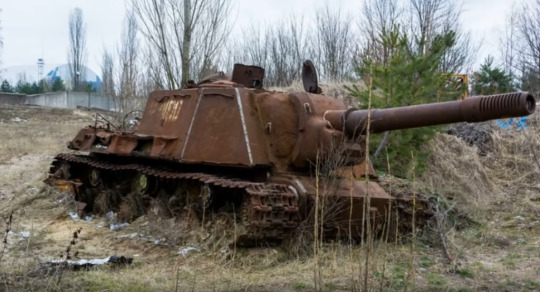
Click here for more info on the ISU-152s
#chernobyl#tank destroyer#radiation#history#toy tank#armored vehicle#accidents and disasters#russian armor#disasters#chnpp#sarcophagus exploration team#chernobyl hbo#autism#disaster#nuclear#kurchatov institute#alexander borovoi
58 notes
·
View notes
Text

I think this may be my favourite line of the shooting schedule for the finale
83 notes
·
View notes
Text

Italian Centauro wheeled tank destroyer in the square near the Freedom Monument, Riga, Latvia, March 28, 2024. Photo by D.P.

#Latvia#Riga#Italy#B1 Centauro#tank destroyer#NATO#street photography#european history#russian defeat#Baltic States#original photography#Northern Europe
8 notes
·
View notes
Photo

An M10 Wolverine which was damaged during the fighting near the beaches of Normandy, June 1944.
64 notes
·
View notes
Text

Cozytober - Day 12 - Sweater
See? I told you it'd look good!
#Cozytober#Margot's RF Art#Rune Factory#RF1#RF#Welcome back that alt design I gave Lynette earlier this year with some added detail!#And I went through so many different expressions for Lynette. Pensive- frowning- furrowed brows- neutral-#It wasn't until late that I decided 'maybe a little relaxed-?' and it's like. Wait now. This is nice. I'm going to keep it#Might use this for an avatar over at Runey Season at some point#This is late in the day due to Margot staying up late for the baseball playoffs- PHILLY PHILLY PHILLYYYYY#And the Month of Mist continuess. With my favorite of my sketches so far#Rune Factory Mist#RF Mist#Rune Factory Lynette#RF Lynette#Can you imagine how protected Mist is after the 1st game by the way?#She attached herself to Raguna - tank destroyer#and I see Lynette as an absolute guard dog who winds up strangely liking the energetic roommate. How cute.#Two bodyguards#Smart lady
16 notes
·
View notes
Text

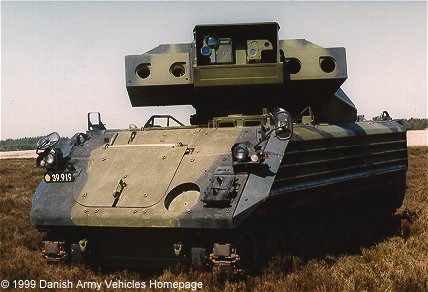
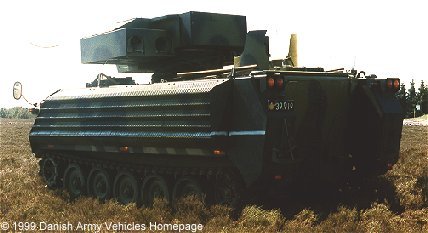
The Elevated TOW System (ETS), basically a M901 ITOW launcher on an elevated mast that extends up to 6.5 meters. Saw Danish Army trials in the 1990s.
89 notes
·
View notes
Photo



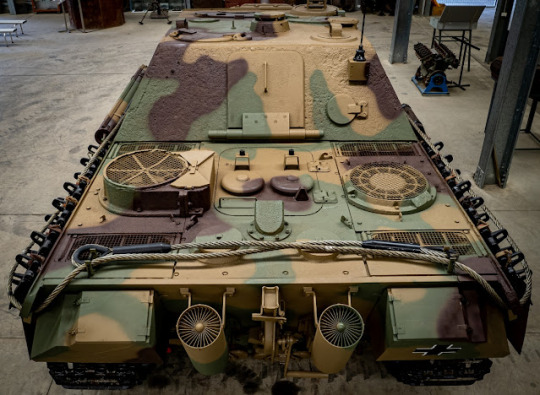

Fully restored Jagdpanther german WW2 tank destroyer of the Australian Armour & Artillery Museum.
196 notes
·
View notes
Text
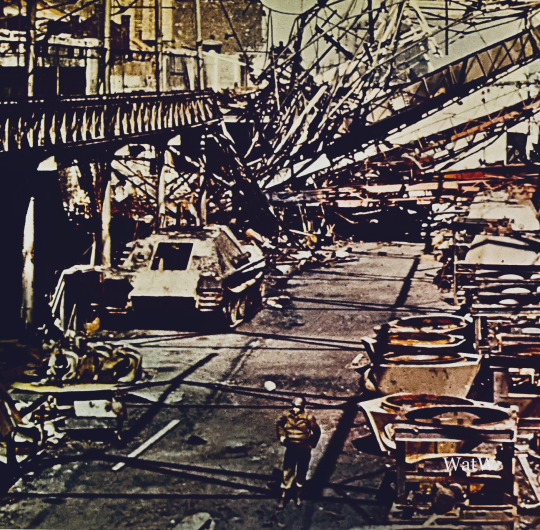
A German tank factory heavily damaged by US air raids. Note the half completed Jagdpanther tank destroyer - exact location unknown, 1945
#world war two#ww2#worldwar2photos#history#1940s#ww2 history#wwii#world war 2#ww2history#wwii era#Jagdpanther#1945#tank destroyer#Germany#factory
111 notes
·
View notes
Text





I feel like I've only been reblogging dark stuff this evening so here are some silly memes I made for a thing on Wattpad way back when
#warhammer 40k#touhou#tanks#mecha#memes#imperial knight#inu sakuya#silly and dumb#cerberus heavy tank destroyer#frickin lasers man#how do they work#warhammer 30k#i guess#it frickin sucks but there are some cool models#eldar#kamishirasawa keine
10 notes
·
View notes
Photo
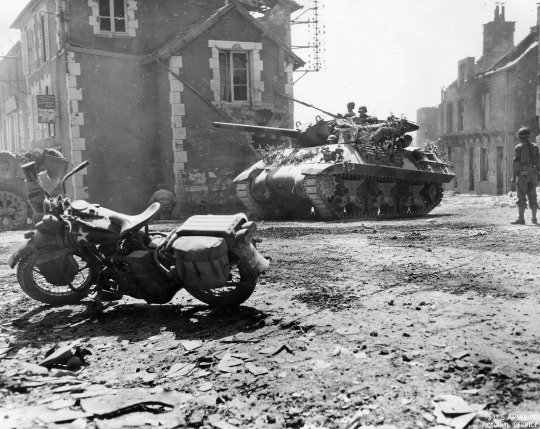
Trafic assuré par un MP de l'armée américaine (Harley-Davidson et M10 Wolverine) – Bataille de Normandie – Percy – Manche – Normandie – France – Juillet 1945
#WWII#Opération Overlord#Overlord#Bataille de Normandie#Battle of Normandy#Armée américaine#American Army#Police militaire#Military police#MP#Char#Tanks#Chasseur de chars#Tank destroyer#M10 Wolverine#M10#2 roues#Motos#Motorcycle#Harley-Davidson#Percy#La Manche#Normandie#Normandy#France#07/1945#1945
132 notes
·
View notes
Text

The Elefant Tank Destroyer. Originally called the Ferdinand after its designer, Ferdinand Porsche. Only around 90 were built, of which 2 still survive as Museum pieces.
Most of the Ferdinands were deployed in Operation Citadel at the Battle of Kursk where many fell victim to mines (among other types of damage). This led to later upgrades such as the application of Zimmerit anti-magnetic paste (you can just about make out on the front of the vehicle above) and an MG34 machine gun.
Only around 50 Ferdinands survived Kursk and post-modification they were eventually renamed the Elefant. The name change wasn't down to the modifications but more that Hitler had a leaning toward using animal names for his armour.
I reckon the image above was likely a tracing as there are a few source photographs (below) of the Ferdinand/Elefant at a similar angle.


This was a back page feature from Battle No. 339, dated 31 October 1981. Treasury of British Comics.
10 notes
·
View notes